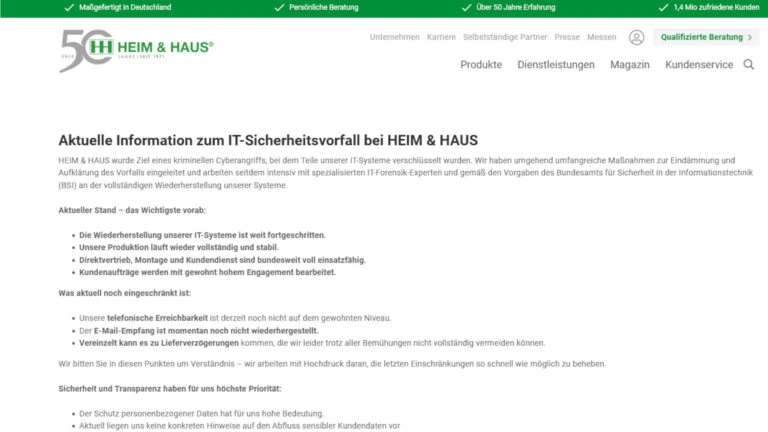Cyberangriff auf Website der S-Bahn Hannover

Nach einem Angriff von außen kommt es zu Einschränkungen bei der Nutzung der Webseite der S-Bahn Hannover. Wie lange die Attacke dauert, ist noch unklar.

Nach einem Angriff von außen kommt es zu Einschränkungen bei der Nutzung der Webseite der S-Bahn Hannover. Wie lange die Attacke dauert, ist noch unklar.

Millionen von Billig-Paketen überfordern Europas Zollbehörden. Jetzt will das EU-Parlament Händler wie Shein und Temu stärker in die Pflicht nehmen - Verbraucher sollen nicht draufzahlen.

Ingram Micro hat drei Tage nach einem Ransomware-Angriff mit der schrittweisen Wiederherstellung seiner Bestellsysteme begonnen. Der IT-Distributor teilte am Dienstag mit, dass der "unbefugte Zugriff auf unsere Systeme in Verbindung mit dem Vorfall eingedämmt und die betroffenen Systeme saniert" seien.

Die Politik will Baden-Württemberg zu einer führenden Region für Künstliche Intelligenz machen - unter anderem mit einem KI-Zentrum in Heilbronn. Bald rollen die Bagger an.

Die britische Einzelhandelskette Marks & Spencer (M&S) ist im April Opfer eines komplexen Cyberangriffs geworden, bei dem Kriminelle durch Social Engineering Zugang zum Unternehmensnetzwerk erlangten. Dies bestätigte M&S-Chairman Archie Norman vor dem Unterausschuss für Wirtschaftssicherheit des britischen Parlaments.

Ein Bundesrichter in Denver hat zwei Anwälte des My-Pillow-CEOs Mike Lindell jeweils zu 3000 Dollar Geldstrafe verurteilt, nachdem diese künstliche Intelligenz zur Erstellung von Gerichtsdokumenten verwendet hatten. Die KI-generierten Schriftsätze enthielten 30 schwerwiegende Fehler, darunter falsche Zitate und Verweise auf nicht existierende Rechtsfälle.

Der Bauelemente-Hersteller Heim & Haus ist Opfer eines Cyberangriffs geworden, bei dem Teile der IT-Infrastruktur verschlüsselt wurden. Während die Produktion bereits wieder vollständig läuft, sind E-Mail-Systeme und Telefonie noch beeinträchtigt.

Im Rahmen des Juli-Patch-Days hat SAP insgesamt 31 Sicherheitshinweise herausgegeben, darunter 27 neue und vier aktualisierte Advisories. Sechs der behandelten Schwachstellen werden als kritisch eingestuft.

Russische Gerichte verlangen extrem hohe Summen von Google wegen Inhalten auf seiner Plattform Youtube. Dagegen hat sich das Unternehmen vor dem Menschenrechtsgerichtshof gewehrt.

In the Islamic Republic, the exile broadcaster "Iran International" is considered a hostile medium. Now there are reports of a major data leak.